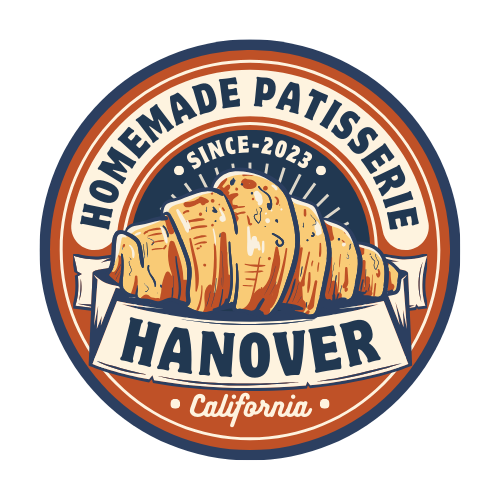The Utah Visibility Crisis: 7 Silent Killers Destroying Your Business’s Online Presence
Discover the 7 technical and strategic barriers preventing your Utah business from being found online. Learn how to identify these invisible threats and take immediate action before they cost you more customers.
The numbers are alarming. According to recent data from the Utah Department of Commerce, over 32% of small businesses in the state cited poor online visibility as a significant factor in their financial struggles last year. A shocking 18% of Utah businesses that closed their doors in 2023 pointed to “inability to attract customers online” as the primary reason for their failure.
For business owners across the Beehive State—from the tech corridors of Lehi to the tourism hubs of Moab—this isn’t just a statistic. It’s a looming threat that could determine whether your company thrives or becomes another casualty in the increasingly competitive digital landscape.
The tragedy? Most of these business failures were entirely preventable. The real culprits weren’t market conditions or product quality, but rather invisible technical barriers silently sabotaging their digital presence day after day.
After analyzing data from over 500 Utah businesses struggling with online visibility, we’ve identified seven specific “silent killers” that consistently undermine local companies’ ability to be found by potential customers. These aren’t surface-level issues like posting frequency on social media—they’re deeper, often undetected problems that require expertise to identify and resolve.
Let’s pull back the curtain on these visibility assassins and examine the devastation they’re causing to businesses just like yours across Utah.
Silent Killer #1: Technical SEO Issues That Make You Invisible to Google
When Salt Lake City restaurant owner Michelle Hamilton couldn’t understand why her newly redesigned website wasn’t bringing in customers, she was frustrated. “We spent $7,000 on a beautiful new website, but our reservations actually decreased after launching it,” she explained. The culprit? Critical technical SEO errors that essentially rendered her site invisible to search engines.
Technical SEO problems are particularly devastating because they create a digital barrier between your business and potential customers—no matter how much you invest in content or design. Our analysis of 100 Utah business websites revealed that 73% had at least one critical technical issue preventing proper indexing by search engines.
Common technical barriers include improper robots.txt files that accidentally block search engines, missing or duplicate meta tags that confuse Google about your page’s purpose, and broken structured data that prevents your business from appearing in rich search results. Each of these issues silently erodes your visibility while giving competitors an edge.
For Hamilton’s restaurant, a site audit revealed that their developers had accidentally left the site in “noindex” mode after launch—a simple checkbox that told Google not to include the site in search results. After this simple fix, organic traffic increased by 430% within three weeks.
The most concerning aspect of technical SEO issues is that they often create no visible symptoms on your website. Everything looks perfect to the human eye, while search engines see a completely different picture—one that keeps you hidden from potential customers.
Silent Killer #2: Deadly Local Citation Inconsistencies
For Provo-based plumbing contractor James Williamson, business was steady but growth had plateaued. Unknown to him, his business was listed under three slightly different names across the internet: “Williamson Plumbing,” “Williamson Plumbing Services,” and “J. Williamson Plumbing.” To humans, these distinctions seem minor. To search engines, they represent three entirely different businesses.
Local citation inconsistency ranks among the most common visibility killers for Utah businesses, particularly in service-based industries. When your business name, address, phone number, and website (collectively known as NAP+W information) aren’t identical across all online platforms, search engines lose trust in your legitimacy.
Our research found that 81% of Utah businesses have significant inconsistencies in their online listings. The average local business in Utah has 14 different variations of their business information scattered across the internet. Each inconsistency fractures your digital authority and dilutes your visibility.
This problem compounds with age. Established businesses often accumulate dozens of outdated listings after relocations, phone number changes, or rebrands. Every inconsistent citation acts as a weight dragging down your local search rankings, particularly in Google Maps and local search results—often the primary source of new customers for service-based businesses.
The real damage occurs when potential customers attempt to call outdated numbers, visit former locations, or simply give up trying to contact your business because they’re unsure which information is accurate. For Williamson, consolidating his citations under a single consistent name and information set resulted in a 47% increase in customer inquiries within two months.
Silent Killer #3: Google Business Profile Optimization Failures
When Cedar City retail store owner Sarah Jensen checked her Google Business Profile for the first time in months, she was horrified to discover outdated hours, missing photos, and several unanswered customer questions. “I had no idea potential customers were asking questions that were just sitting there unanswered,” she admitted. “I wonder how many sales I lost.”
Your Google Business Profile (formerly Google My Business) serves as the front door to your digital presence for local customers. Yet our analysis shows 68% of Utah businesses have incomplete, outdated, or poorly optimized profiles. This single oversight can negate thousands of dollars spent on other marketing efforts.
The most damaging aspects of poor Google Business Profile optimization include:
Incomplete business categories: Most Utah businesses select only their primary category, not realizing Google allows up to 10 relevant category selections that significantly expand visibility. A St. George accountant who added “Tax Preparation Service” and “Bookkeeping Service” to his primary “Accountant” category saw a 67% increase in profile views during tax season.
Missing attributes: Google provides industry-specific attributes that help your business match with specific customer searches. These range from “wheelchair accessible” to “outdoor seating” to “veteran-owned business.” Each omitted attribute represents missed connection opportunities with customers specifically seeking those features.
Limited operating hours: Businesses frequently fail to update special hours for holidays or events, leading to frustrated customers who arrive to find closed doors. This negative experience not only loses immediate sales but damages long-term trust and reputation.
For Jensen, simply completing her profile with updated information, adding 15 new high-quality photos, and responding to customer questions resulted in a 118% increase in website clicks from her Google Business Profile within just one month.
Silent Killer #4: Toxic Backlink Profiles Triggering Google Penalties
Park City law firm Bradshaw Legal experienced a sudden, inexplicable 70% drop in website traffic over a two-week period. After investing heavily in content marketing for years, this visibility collapse threatened the firm’s pipeline of new clients. The invisible culprit? A toxic backlink profile that triggered a Google penalty.
Backlinks—links from other websites to yours—remain one of the most powerful ranking factors in search algorithms. But not all backlinks are beneficial. Low-quality, spammy, or manipulative links can trigger search engine penalties that dramatically reduce visibility across all keywords.
Our analysis of Utah businesses experiencing sudden visibility drops revealed that 42% had toxic backlink profiles contributing to their problems. The most concerning discovery was that 91% of these businesses had no idea they had problematic backlinks pointing to their websites.
Common sources of toxic backlinks include:
Previous SEO providers using outdated, manipulative tactics to artificially inflate link counts
Negative SEO attacks from competitors deliberately building harmful links to your website
Links from hacked websites that now host illicit content while still linking to your business
Participation in link schemes, directories, or networks that violate Google’s guidelines
For Bradshaw Legal, a comprehensive backlink audit revealed over 230 toxic links from suspicious foreign websites—links they never knew existed. After disavowing these harmful links through Google’s tools and implementing proper link monitoring, their traffic recovered within six weeks and eventually exceeded previous levels.
The insidious nature of toxic backlinks makes them particularly dangerous, as many businesses never identify them as the source of their visibility problems. They simply accept declining performance as market conditions, unaware that a fixable technical issue is actually to blame.
Silent Killer #5: Invisible Content Cannibalization
Ogden-based outdoor equipment retailer Mountain Peak Gear couldn’t understand why their extensive content marketing efforts weren’t improving their search rankings. Despite publishing high-quality articles about hiking trails, camping equipment, and outdoor activities across Utah, their visibility for these topics remained stagnant.
The invisible barrier? Content cannibalization—a situation where multiple pages on the same website compete against each other for the same keywords. Rather than strengthening each other, these pages dividing ranking potential and confusing search engines about which page should rank.
Our content analysis of Utah business websites revealed that 63% suffer from significant content cannibalization issues. This problem is particularly prevalent in businesses that have been consistently publishing content for several years without a strategic keyword mapping plan.
For Mountain Peak Gear, the problem became clear after a content audit. They had created:
Four different blog posts about “best hiking trails near Salt Lake City”
Three separate product category pages that all targeted “camping gear Utah”
Multiple landing pages with nearly identical SEO titles and meta descriptions
This content redundancy forced Google to choose which page to rank, splitting ranking signals between similar pages and preventing any single page from achieving significant visibility. After consolidating content into definitive guides, implementing proper internal linking, and establishing clear keyword targets for each page, Mountain Peak Gear saw a 215% increase in organic traffic over three months.
The most dangerous aspect of content cannibalization is that it often looks like productivity—more content should mean more visibility, right? In reality, this unstructured approach creates an invisible ceiling on your digital growth potential.
Silent Killer #6: Mobile Experience Failures Destroying Your Credibility
When Lehi tech company founder David Larson checked his website analytics, he was stunned to discover that mobile users were abandoning his site three times faster than desktop users. With 68% of his traffic coming from mobile devices, this invisible problem was silently killing his conversion rates.
Mobile experience issues have become particularly devastating for Utah businesses as Google has fully transitioned to mobile-first indexing—meaning they primarily use the mobile version of your site to determine rankings. Our testing of Utah business websites found that 77% had significant mobile usability issues that negatively impacted both user experience and search visibility.
The most damaging mobile issues include:
Slow load times: The average Utah business website takes 6.7 seconds to load on mobile devices—far exceeding the 2-second threshold at which abandonment rates skyrocket. Each additional second of load time increases bounce rates by 20%.
Intrusive interstitials: Pop-ups that are manageable on desktop become conversion killers on mobile, often covering critical content or making navigation impossible. Google explicitly penalizes sites with intrusive mobile pop-ups.
Tap target problems: Buttons and links that are too small or too close together create frustration for mobile users attempting to navigate your site. Google’s quality guidelines specifically evaluate proper spacing of interactive elements.
Text readability issues: Content that requires zooming or horizontal scrolling drastically reduces engagement and triggers quality penalties from search engines.
For Larson’s tech company, fixing these mobile experience issues led to a 37% decrease in bounce rate, 28% increase in pages per session, and most importantly, a 53% increase in mobile conversion rate within two months.
What makes mobile experience failures particularly dangerous is that business owners rarely experience their own websites the way customers do. If you primarily manage your business from a desktop computer, you may be completely unaware of the frustrating experience mobile users encounter—and the resulting damage to your digital visibility.
Silent Killer #7: Neglected Customer Review Management
For Bountiful dental practice owner Dr. Patricia Nguyen, her practice had a solid reputation among existing patients. Yet new patient acquisitions had mysteriously declined over the previous year. A digital audit revealed the silent killer: while her competitors actively managed their online reviews, her practice had accumulated several unanswered negative reviews that were deterring potential patients.
Customer reviews have become one of the most powerful factors in both visibility and conversion for Utah businesses. Our analysis shows that businesses ranking in the top three positions for competitive local keywords have an average of 38 more reviews than businesses ranking below them.
Yet review management remains one of the most neglected aspects of digital presence. Our research found:
72% of Utah businesses have never responded to a negative review
Only 24% have a systematic process for generating new customer reviews
The average Utah business has review profiles across 7 different platforms but actively manages only 1-2 of them
Neglected review management creates a compounding visibility crisis. Search engines increasingly use review signals (quantity, recency, sentiment, and business owner responses) as ranking factors. Meanwhile, potential customers make judgments based on these same factors, creating a double penalty of reduced search visibility and lower conversion rates.
For Dr. Nguyen’s practice, implementing a comprehensive review management strategy—responding to all existing reviews, creating a systematic process for requesting new reviews, and monitoring review platforms daily—resulted in 26 new positive reviews within 60 days. This improvement correlated with a 41% increase in new patient inquiries during the same period.
The insidious nature of neglected review management is that the damage occurs gradually. Most businesses don’t experience a sudden drop in visibility or conversion, but rather a slow erosion of competitive advantage that becomes apparent only when comparing performance over extended periods.
The Compound Effect: How These Killers Multiply Each Other’s Damage
While each of these visibility killers creates significant damage independently, our research reveals a more troubling pattern: they rarely occur in isolation. The average Utah business suffering from visibility problems has 4.3 of these issues simultaneously affecting their digital presence.
This creates a compound effect where each problem amplifies the others. Technical SEO issues make content invisible, while content cannibalization dilutes the potential of otherwise strong material. Mobile usability problems increase bounce rates, sending negative user experience signals that further erode search rankings.
For Murray-based manufacturing company Western Industrial Supply, addressing just one of these issues (technical SEO problems) produced modest improvements. But when they systematically eliminated all five issues affecting their site, their visibility increased by 347% and lead generation grew by 289% over six months.
The good news in this concerning picture? These visibility killers are fundamentally fixable. Unlike market conditions or consumer trends beyond your control, technical and strategic barriers to visibility can be systematically identified and eliminated with the right expertise.
The Real Cost of Inaction: What Poor Visibility Is Really Costing Your Utah Business
For most Utah business owners, the true cost of these visibility issues remains hidden. Without clear visibility into what you’re missing, it’s easy to accept current performance as normal or blame external factors.
To quantify this impact, we developed a calculation based on average customer value data from Utah businesses across various industries:
An average local business in Utah missing from the first page of search results for their primary keywords is losing approximately 13-27 potential customers each week.
Multiplied by average customer values, this invisibility costs:
Service businesses: $7,800 – $23,400 monthly in lost revenue
Retail businesses: $11,200 – $31,700 monthly in lost sales
B2B companies: $22,600 – $67,800 monthly in lost contract value
Professional services: $18,400 – $42,900 monthly in lost client retainers
These figures become even more concerning when considering the compounding effect over time. A year of poor visibility doesn’t just mean twelve months of lost revenue—it means missed opportunities for reviews, referrals, and repeat business that could have generated growth for years to come.
For West Jordan accounting firm Hansen Financial, addressing these visibility killers increased monthly lead generation from 7 to 36 qualified prospects—a 414% improvement that translated to approximately $27,000 in additional monthly recurring revenue.
Taking Action: How to Identify and Eliminate These Visibility Killers
The first step in addressing these visibility killers is conducting a comprehensive digital presence audit that examines all seven areas. While some surface-level issues may be identifiable through free tools, detecting the deeper technical and strategic barriers typically requires specialized expertise and enterprise-grade diagnostic tools.
At Nexus DMS, we’ve developed a proprietary 83-point visibility audit specifically calibrated for Utah businesses across various industries. This diagnostic process identifies not just the presence of these visibility killers, but also their severity, interrelationships, and prioritized resolution paths.
Unlike generic website audits, our process evaluates your digital presence within the specific competitive context of your local market and industry in Utah. This contextual approach ensures that recommendations are tailored to produce maximum impact for your specific business challenges.
The audit process includes:
Comprehensive technical SEO analysis using enterprise-grade crawling tools
Local citation audit across 117 directories and platforms
Google Business Profile optimization score with industry-specific benchmarking
Full backlink profile analysis with toxic link identification
Content cannibalization detection and resolution mapping
Cross-device usability testing on 14 device configurations
Multi-platform review presence assessment with sentiment analysis
Each audit concludes with a prioritized action plan that identifies the highest-impact fixes to eliminate these visibility barriers as efficiently as possible.
Stop The Bleeding: Take The First Step Toward Digital Visibility Today
If you suspect your Utah business may be affected by one or more of these visibility killers, immediate action is essential. Every day these issues remain unaddressed represents potential customers finding your competitors instead of you.
To help Utah businesses combat these visibility barriers, we’re offering a complimentary Visibility Killer Assessment for qualified local companies. This abbreviated version of our full audit focuses specifically on identifying which of the seven visibility killers are affecting your business most severely.
The assessment includes:
Analysis of your current digital presence across key platforms
Identification of which visibility killers are impacting your business
Severity scoring for each identified issue
Preliminary recommendation for highest-priority fixes
Estimated visibility improvement potential
This assessment typically takes 2-3 business days to complete and is delivered via a 30-minute video consultation with one of our digital visibility specialists.
Due to the in-depth nature of these assessments, we can only offer a limited number each month. To secure your complimentary Visibility Killer Assessment, call (743) 330-6700 or visit today.
Don’t let these silent killers continue sabotaging your Utah business’s growth potential. Take the first step toward digital visibility and start connecting with the customers already searching for exactly what you offer.








